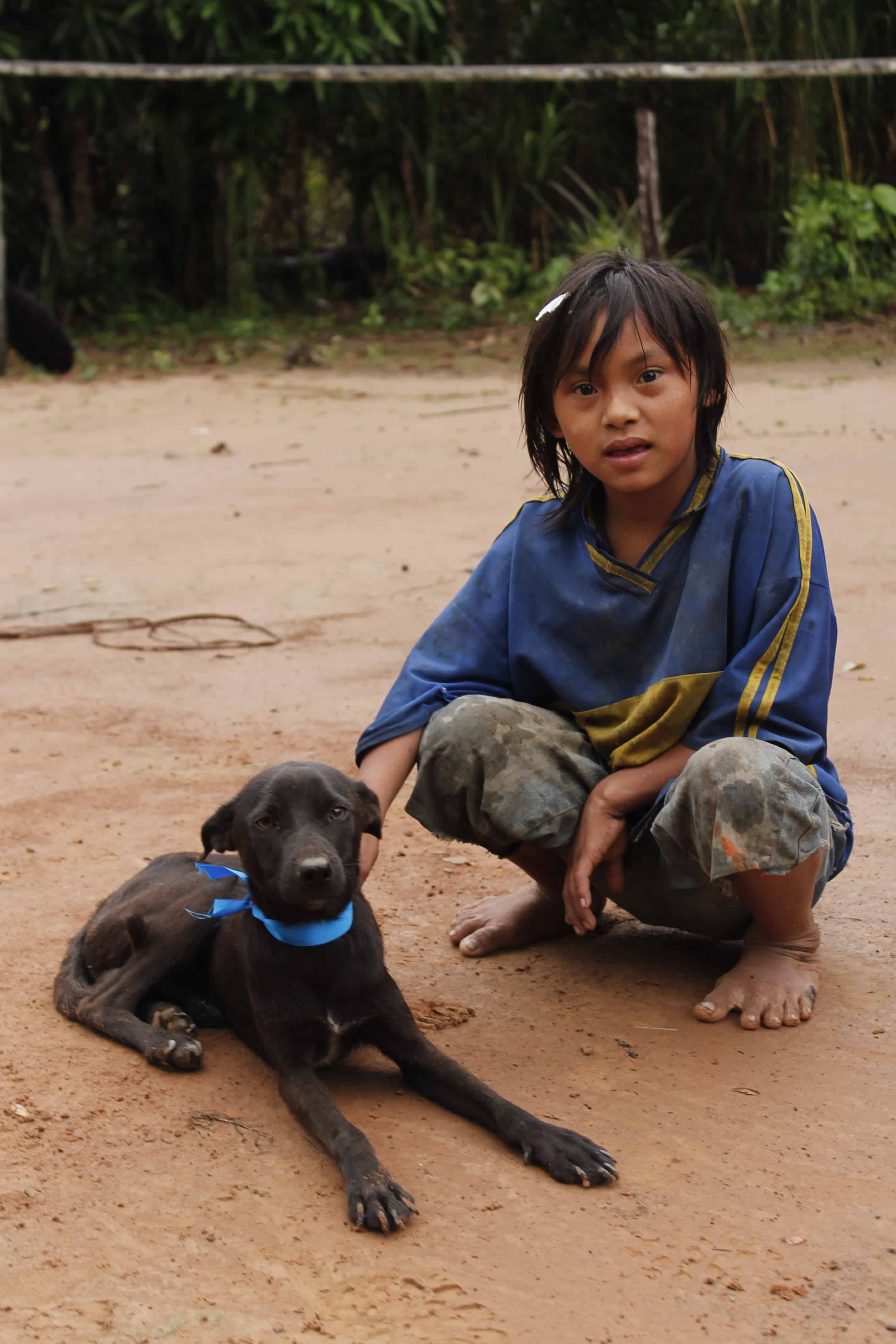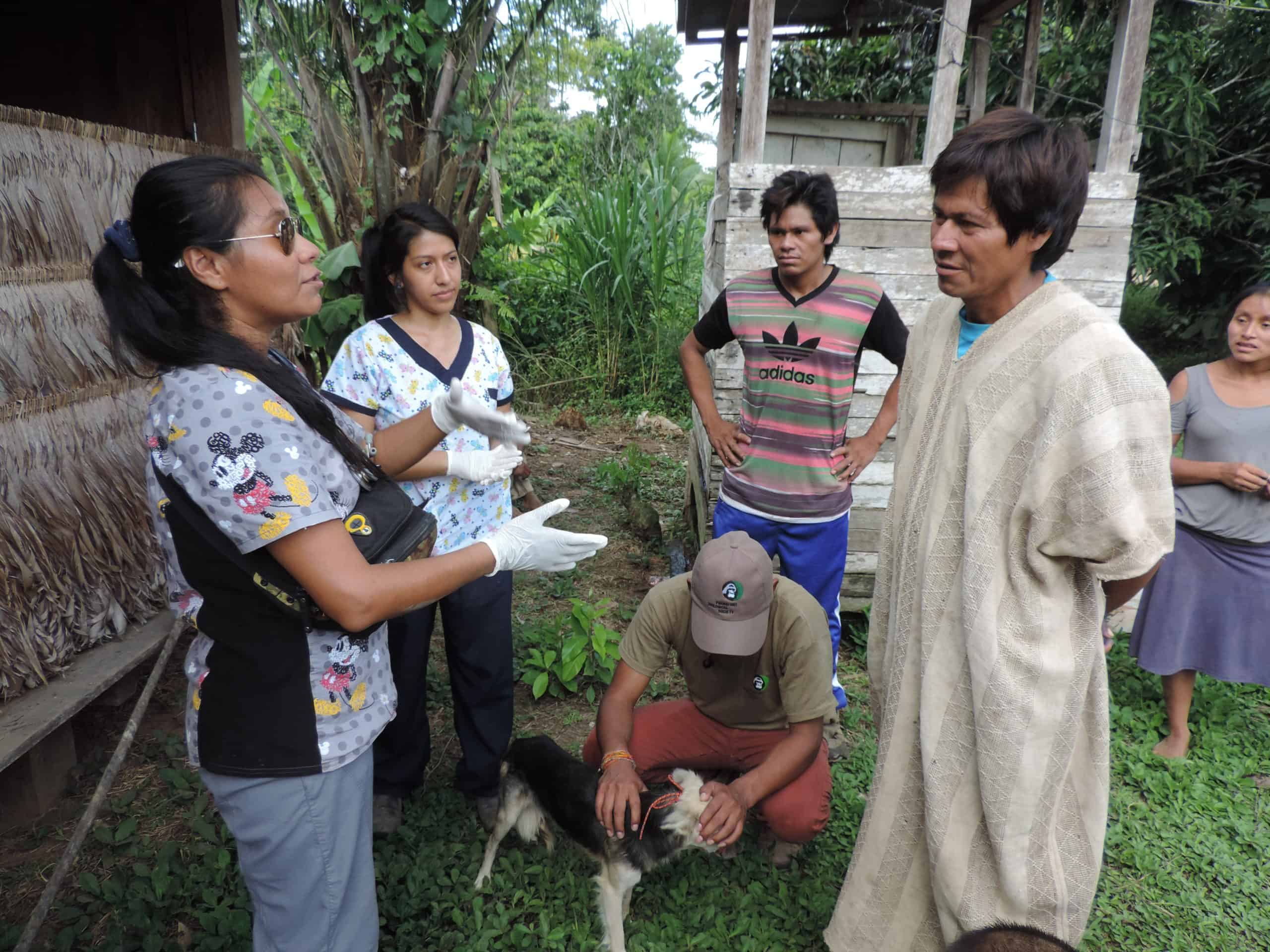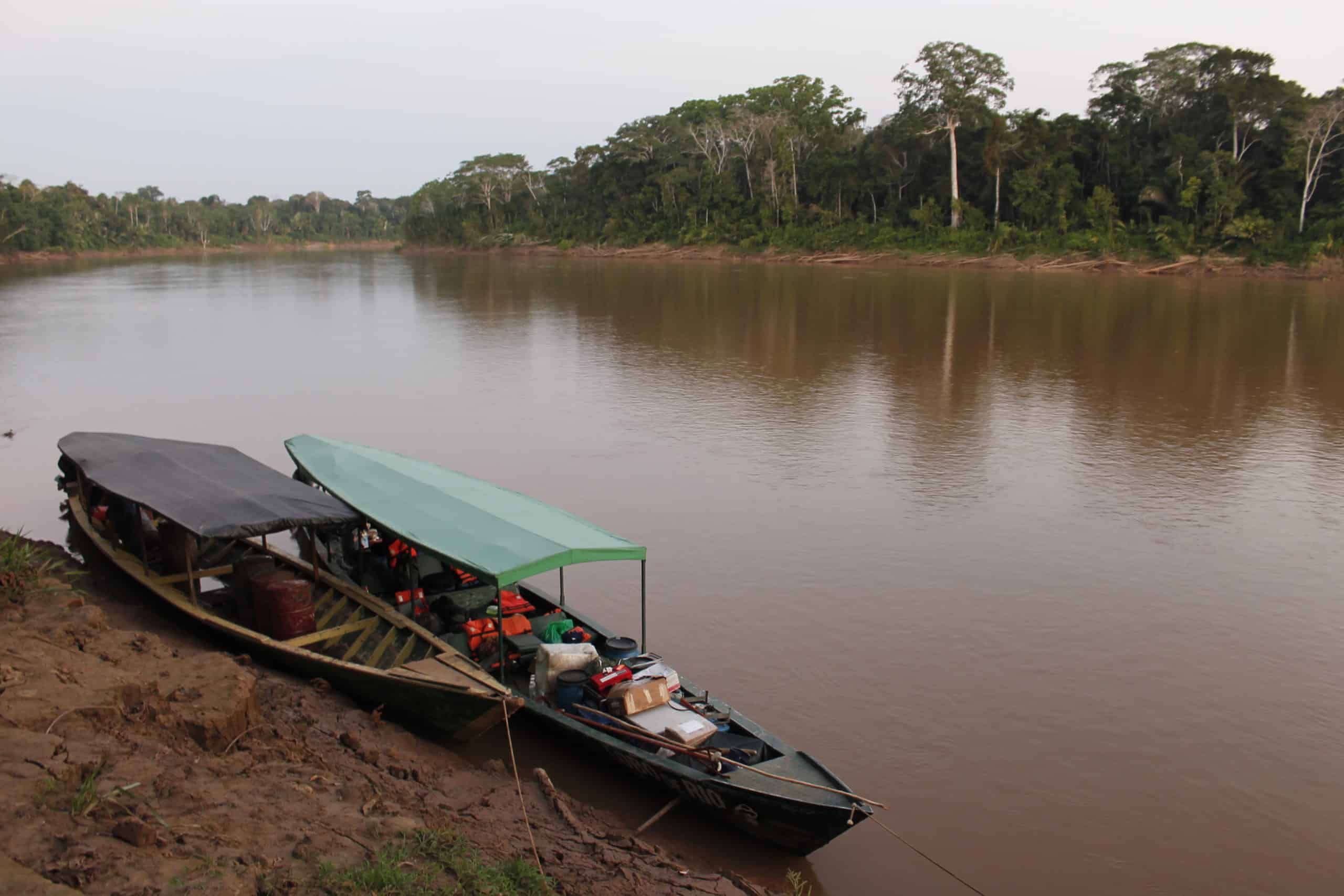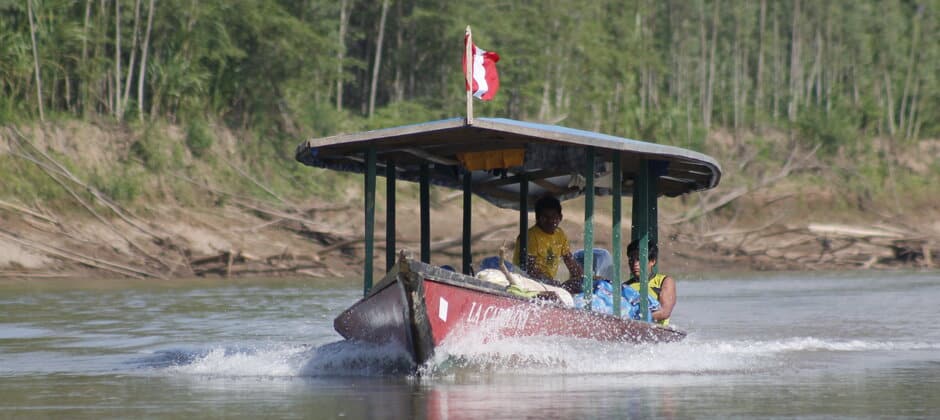Share this article
TWS2020: Dogs could herald zoonotic diseases in Amazon
Peru’s Manu National Park seems a long way from anywhere by the measure of just about anybody — except maybe the Matsigenka people who live in the region. Even TWS member Miryam Quevedo, a professor at the National University of San Marcos who lives in Lima, had to fly from Lima to Puerto Maldonado, then travel several hours by car and two days by boat to reach the farthest community where she and her colleagues conducted research. In dry periods that require portages through low water sections of the Madre de Dios River, the whole trip can take four more days.
Nonetheless, the chance to see animals and unique parts of her country that most Peruvians don’t even see was “a great experience,” Quevedo said.
Enlarge

Credit: Jesus Lascano
She was working with a team, including partners at the Frankfurt Zoological Society, to determine the role that dogs may play in transmitting zoonotic diseases between wildlife and people living in indigenous communities deep in the jungle. Due to the remoteness of the area and the connection between people and dogs — and dogs and wildlife — these areas are potential hotspots for transmitting zoonotic diseases. But that remoteness also can lead to a lack of healthcare options. That can be problematic when zoonotic diseases — diseases that jump from wildlife to humans — could reach areas of large human population in the country.
“Information is lacking in native communities, because native communities have very limited access to health services,” said Jesus Lescano, research consultant at FSZ who worked on the ongoing project that Quevedo presented on a poster at The Wildlife Society’s virtual 2020 Annual Conference. The communities also often rely on traditional medicine, making western health preventions difficult in communities where most people don’t even speak Spanish. Quevedo said they overcame the language barrier as some of the anthropologists with FZS could speak the Matsigenka language.
Enlarge

Credit: Frankfurt Zoological Society
The researchers set out to three remote communities in the national park to test domestic dogs for zoonotic agents associated with heartworm, ehrlichiosis and various blood diseases — first seeing a doctor to test for diseases themselves for fear they might infect the same people they were hoping to protect. While these diseases had been found in the comparatively large river town of Puerto Maldonado, they hadn’t yet been detected in these small, remote communities.
“Populations in these three communities are vulnerable, with little access to health care, and most of them have anemia and malnutrition,” Quevedo said.
Their results showed that about 92% of dogs in the communities that were tested carried antibodies of at least one type of Leptospira, bacteria, which can cause a deadly blood disease in humans. All dogs in the Tayakome and Yomibato communities that were tested carried antibodies to these bacteria. That bacteria can spread to humans through the dogs’ urine, when it contaminates drinking water supplies or other parts of the environment humans come into contact with.
A large number of dogs in the Tayakome, Maizal and Yomibato communities also carried heartworm, which can transmit to humans in rare cases.
Enlarge

Credit: Miryam Quevedo
“These results suggest native communities living at [Manu National Park] might be exposed to some infectious agents, which should be considered within public health programs focused on this population,” the authors wrote in their poster abstract.
Testing dogs is important, Quevedo said, since dogs may interact with wildlife in ways that humans might not, making them potential vectors for zoonotic disease. “They can attack many wild species and can be spreaders,” she said.
By testing these dogs, researchers can provide an early warning system for the emergence of new zoonotic diseases in a One Health approach, which involves taking full account of the role ecological relationships, human health, and wildlife health has on the spread and emergence of zoonotic diseases.
“This interrelation between domestic and wild animals can be used to determine in advance the emergence of any disease of public health importance,” Quevedo said.
The indigenous communities in the region are underserved by health care — Quevedo said that 70% of children under 5 are undernourished, and 30% have anemia.
As part of their work, Quevedo and Lescano helped teach community members about the results of their study and ways to prevent them in the future, including vaccinations and deworming.
But the ongoing COVID-19 pandemic, also a zoonotic disease, highlights the importance of keeping remote communities like this healthy. “This study will serve the Peruvian government to establish sanitary measures for the communities and this pandemic makes us reflect on prevention measures in forgotten communities such as the Matsigenkas,” Quevedo said.
This research was presented at TWS’ 2020 Virtual Conference. Conference attendees can continue to visit the virtual conference and review Shukla’s paper for six months following the live event. Click here to learn about how to take part in upcoming conferences.
Header Image: Researchers traveled long hours by boat to reach remote indigenous communities in the Peruvian Amazon. Credit: Miryam Quevedo








